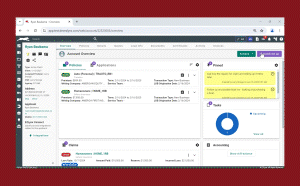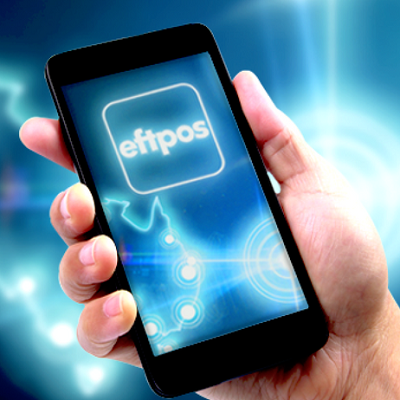The Fair Credit Billing Act of 1974 gives you the right to dispute a charge that you consider an error or fraud. You may even have recourse if you’re simply dissatisfied with the product or service you bought.
By taking a few key steps as you submit a dispute, you can increase your chances of getting your money back.
Here’s a helpful strategy for disputing an unwanted credit card charge.
1. Confirm that the charge warrants disputing
Review your credit card statement for the transaction in question. Your statement will list the merchant’s name and also, typically, the location and/or contact information. Confirm that the charge has indeed been posted to your account and that it’s not simply pending. You can’t dispute a charge until it officially posts, and many pending charges disappear within a few days.
If the charge has posted but it’s for the wrong amount — or if you’re unsatisfied with the product or service — you have options and can proceed to Step 2 below.
But if it’s instead a charge you don’t recognize at all:
-
Conduct a quick online search. Businesses may operate under several different names.
-
Consider whether you have any free trials or recurring payments that you previously signed up for but forgot about.
-
Check with any authorized users on the account to confirm that they didn’t make the charge in question.
If you can’t determine the origin of the charge, it’s possible your account has been compromised, and you’ll want to move quickly to secure your account.
2. Determine whether to contact the merchant or credit card issuer
Whom you contact first will depend on the nature of the charge.
Dissatisfaction with goods or services
If you ordered an item that turns out to be of poor quality, you can attempt to return the item, in which case the merchant might issue you a replacement or a refund. But if for some reason a dispute arises and the merchant can’t or won’t make it right, you can attempt what’s called a chargeback.
Created under the Fair Credit Billing Act, a chargeback is a reversal of a transaction that can occur after a credit or debit card holder has filed a dispute with their issuing bank. A chargeback can be easy to initiate — often by accessing your digital bank statement or payment card app — but the process itself tends to be involved and lengthy, not to mention costly for the merchant. In order for you to take this step, credit card issuers generally require that you first attempt to resolve the issue with the merchant. Issuers may also impose other rules or restrictions, such as a requiring that the transaction in question meets a minimum purchase threshold or was made within a certain distance of your home.
In short, a refund or replacement directly from the merchant will be preferable for most parties.
Ready for a new credit card?
Create a NerdWallet account for insight on your credit score and personalized recommendations for the right card for you.
Billing errors
In some cases, it might also make sense to contact the merchant first if there is a mistake with the charge, or you’ve ordered a product that never arrived in the mail. For example, if you were charged twice for an item or service, the merchant can generally correct that, especially if you have the receipt.
But again, if you can’t resolve the matter with the merchant quickly, consider escalating it to the issuer. You have a window of only 60 days after the date the transaction was made to dispute the charge.
Fraudulent charges
For a transaction that appears to be fraudulent, contact the credit card issuer immediately. After all, if your card information has been compromised, there’s little an individual merchant can do for you.
Typically, your credit card issuer will issue you a new credit card number, sometimes immediately. In the meantime, for an extra layer of safety, you can turn on the “card lock” feature that most major issuers offer their customers.
And don’t panic. When it comes to credit cards, federal law caps your liability at $50 for unauthorized charges, and the vast majority of credit cards take it a step further by providing zero-liability protection, which eliminates your responsibility entirely. (However, the rules for debit cards offer less protection.)
3. Collect documents and correspondence
Whatever the nature and circumstance of your dispute, you may need proof to back it up: receipts, photos, email exchanges, notes, or a merchant’s terms and conditions, depending on what makes sense.
Keep names, phone numbers or email addresses, and the time of day you spoke to different parties. All of this information could be useful in your dispute.
4. Follow up with a letter if it makes sense
If you end up needing to involve the credit card issuer, the easiest way to dispute a charge is typically online or over the phone. But to ensure you’re fully covered under the law’s consumer protections, it’s important to follow up with a letter, according to the Federal Trade Commission’s website.
If you’ve already contacted the credit card issuer and a review of the transaction is pending, sending a letter shortly after those communications can ensure you’re operating within the narrow window of time you may have to dispute a charge — and you’ll have proof that you did so.
Certain rights also apply after you send a letter. For a billing error, the issuer has 30 days to confirm receipt of the letter and up to 90 days to resolve the matter.
The address for billing disputes is likely different from the one where payments are sent. Confirm with the issuer the best address to use when sending a written notice to dispute a charge. Send a copy through certified mail with a return receipt to ensure it arrives, and keep the original for your records.
🤓Nerdy Tip
Ensure that your letter to the credit card issuer about a disputed charge includes the following: a date, your name, the account number, the amount of the disputed transaction, the date of that transaction and information about the transaction detailing why it’s incorrect. Also, include copies of documents that might be helpful (see Step 3 above).
5. Wait for a response
You’ll have to practice patience while any dispute is being reviewed, but that’s especially true in cases of a chargeback. During this time, you’re not on the hook for the charge, but you should continue making payments as usual to avoid late charges.
If the credit card issuer determines your dispute is valid, they’re required to remove the charge from the bill. But if the issuer determines the dispute is not justified, you’ll have to pay the charge. The issuer must tell you the reason for rejecting your dispute and inform you of the date that payment is due.
If you disagree with the issuer’s decision, you may be able to appeal it within the time frame offered by the issuer or within 10 days of receiving the decision, whichever comes later.
Another option is to file a complaint with the Consumer Financial Protection Bureau.
🤓Nerdy Tip
If the credit card issuer rules against you in a dispute and you don’t pay the outstanding amount, the issuer can eventually send your account to collections. This action can harm your credit scores. If you don’t want to pay the transaction because you’re appealing the decision, you can notify the issuer that this is the case. The issuer will then have to state that the billing error is being disputed if it decides to report you to the credit bureaus as delinquent.
What does “dispute a charge” mean?
What happens when you dispute a charge?
Who pays when you dispute a charge?
What happens if your credit card dispute is denied?
How long do you have to dispute a credit card charge?








































